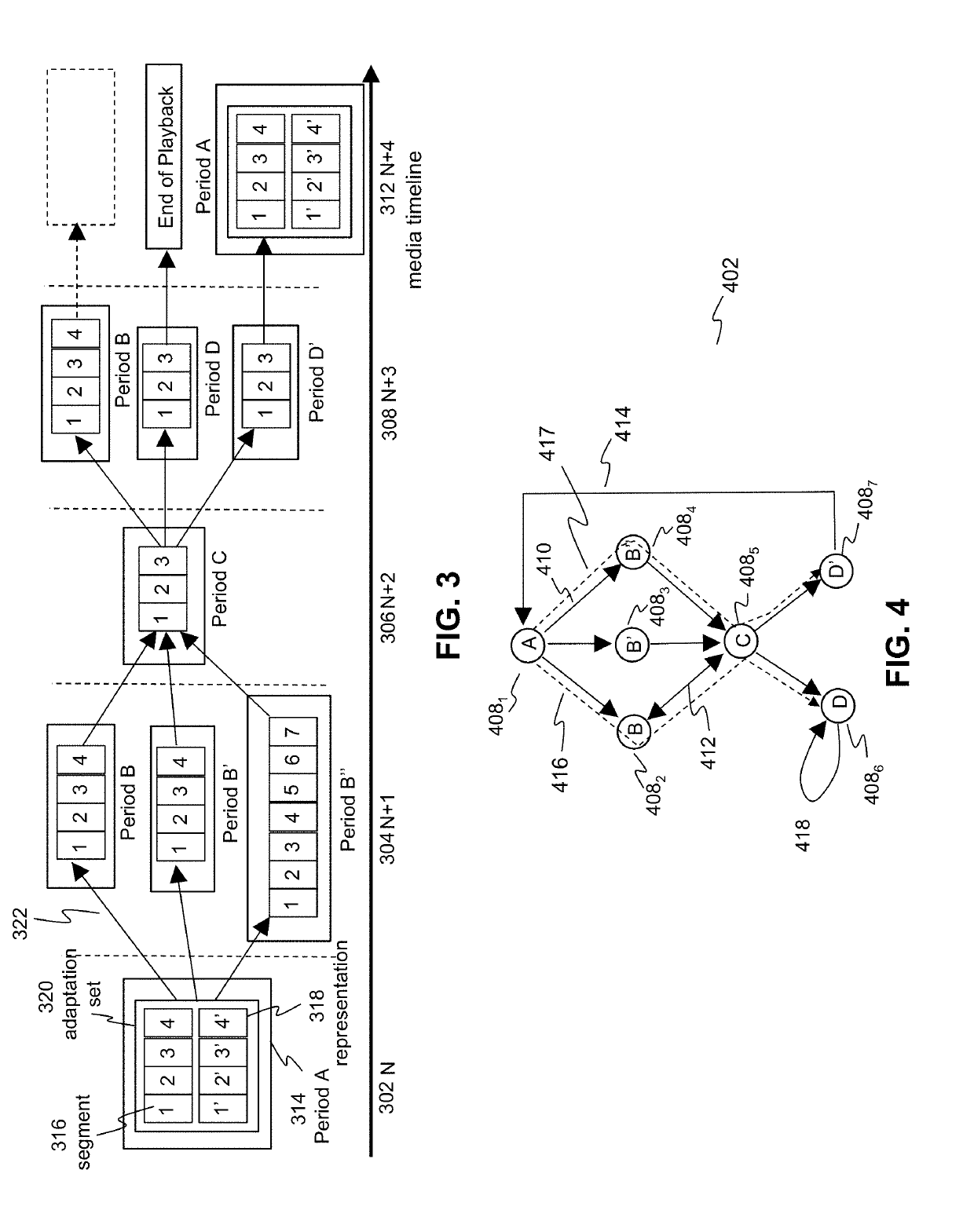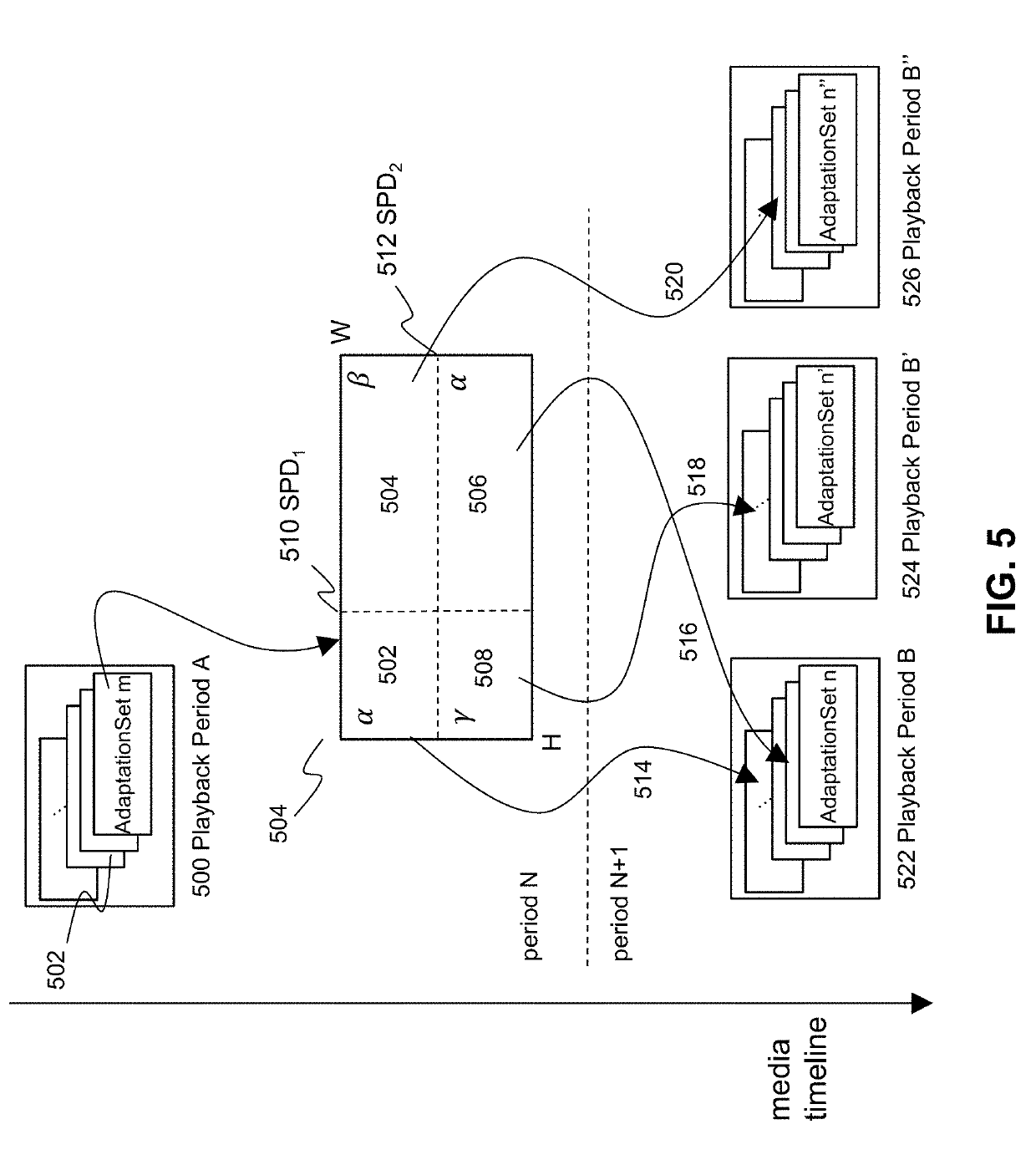Cilent-Based Adaptive Streaming of Nonlinear Media
a nonlinear media and adaptive technology, applied in the field of adaptive streaming of nonlinear media, can solve the problems of not generating content, requiring high bandwidth requirements, and unable to stream high-quality non-planar video conten
- Summary
- Abstract
- Description
- Claims
- Application Information
AI Technical Summary
Benefits of technology
Problems solved by technology
Method used
Image
Examples
second embodiment
In the second embodiment, an MPD validity expiration event may be inserted in a segment a client device is downloading.
[0111]In both cases, when the client device is at the playback time as indicated by the MPD validity expiration event, a new MPD will be sent by the server to the client device. In an embodiment, the server may send the MPD upon expiration or a predetermined time before expiration to the client device. In another embodiment, the client device may request the server to send the MPD before expiration to the client device. The new MPD comprises the next Playback Period and the client device may continue playback in the normal way.
[0112]In Table 5 below parameters for such a validity expiration event are provided. The presentation_time and timescale parameters may be content dependent and are used by the client device in order to determine at what time instance in the media playback the client device should receive or request an MPD update.
TABLE 5Parameters for a MPD va...
PUM
 Login to View More
Login to View More Abstract
Description
Claims
Application Information
 Login to View More
Login to View More - R&D
- Intellectual Property
- Life Sciences
- Materials
- Tech Scout
- Unparalleled Data Quality
- Higher Quality Content
- 60% Fewer Hallucinations
Browse by: Latest US Patents, China's latest patents, Technical Efficacy Thesaurus, Application Domain, Technology Topic, Popular Technical Reports.
© 2025 PatSnap. All rights reserved.Legal|Privacy policy|Modern Slavery Act Transparency Statement|Sitemap|About US| Contact US: help@patsnap.com



